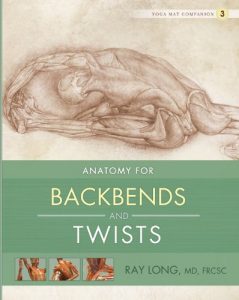Practicing yoga is not necessarily the path of least resistance. And although the Sanskrit word asana translates to mean “a comfortable, easy position,” most yoga poses are neither comfortable nor easy. Working with them, however, makes daily life more comfortable and easy.
So why integrate Western science into the ancient art of Hatha Yoga? Because scientific techniques enable you to intelligently design your practice and give you confidence in your teaching. Hatha Yoga works with the body and Western science understands how the body works.
For example, suppose you want to deepen a backbend such as Urdhva Dhanurasana. Knowledge of anatomy, biomechanics, and physiology enable you to predictably do this. Or if you’re a teacher and a student comes to you with lower back discomfort in Camel Pose, you can use the abdominal “air bag” effect discussed in this book and often address the problem quickly and easily. Similarly, if you wish to deepen twists for yourself or your students, design your practice to involve physiological techniques such as facilitated stretching that will release and lengthen the muscles that inhibit turning the trunk. Many of these solutions would not be obvious, or would even be counterintuitive, unless you knew how to apply scientific principles to yoga. This book explains these techniques in detail, with their practical application for backbends and twists.
Spare no effort in searching out areas of resistance in your yoga poses. If your body is stiff, use the physiological techniques described in the Mat Companion series to lengthen muscles, break through barriers, and gain flexibility. If your body is flexible, then work with the bandhas described here to increase your strength.
Painter and sculptor George Braque once said, “Art disturbs, science reassures.” The idea is that art takes one out of a comfort zone and into new experiences. Science provides grounding and stability. Yoga poses are like physical sculptures that take you out of your comfort zone. Scientific techniques are the sculpting tools that allow you to do this with intelligence and precision.
So why integrate Western science into the ancient art of Hatha Yoga? Because scientific techniques enable you to intelligently design your practice and give you confidence in your teaching. Hatha Yoga works with the body and Western science understands how the body works.
For example, suppose you want to deepen a backbend such as Urdhva Dhanurasana. Knowledge of anatomy, biomechanics, and physiology enable you to predictably do this. Or if you’re a teacher and a student comes to you with lower back discomfort in Camel Pose, you can use the abdominal “air bag” effect discussed in this book and often address the problem quickly and easily. Similarly, if you wish to deepen twists for yourself or your students, design your practice to involve physiological techniques such as facilitated stretching that will release and lengthen the muscles that inhibit turning the trunk. Many of these solutions would not be obvious, or would even be counterintuitive, unless you knew how to apply scientific principles to yoga. This book explains these techniques in detail, with their practical application for backbends and twists.
Spare no effort in searching out areas of resistance in your yoga poses. If your body is stiff, use the physiological techniques described in the Mat Companion series to lengthen muscles, break through barriers, and gain flexibility. If your body is flexible, then work with the bandhas described here to increase your strength.
Painter and sculptor George Braque once said, “Art disturbs, science reassures.” The idea is that art takes one out of a comfort zone and into new experiences. Science provides grounding and stability. Yoga poses are like physical sculptures that take you out of your comfort zone. Scientific techniques are the sculpting tools that allow you to do this with intelligence and precision.






